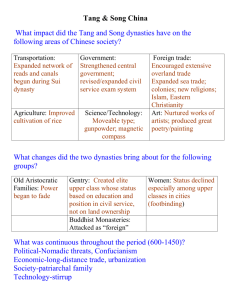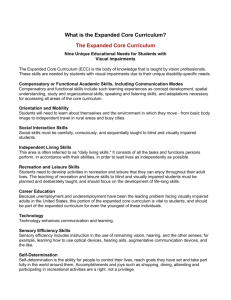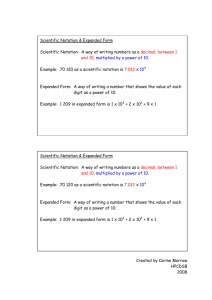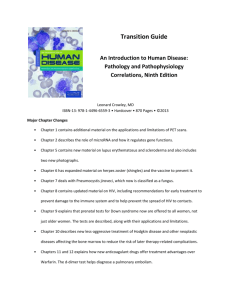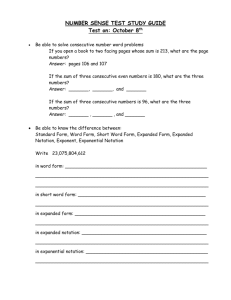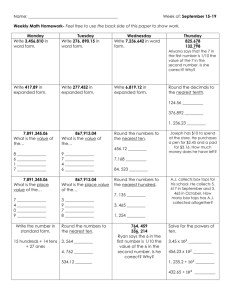Place Value Systems of Numeration in Other Bases
advertisement
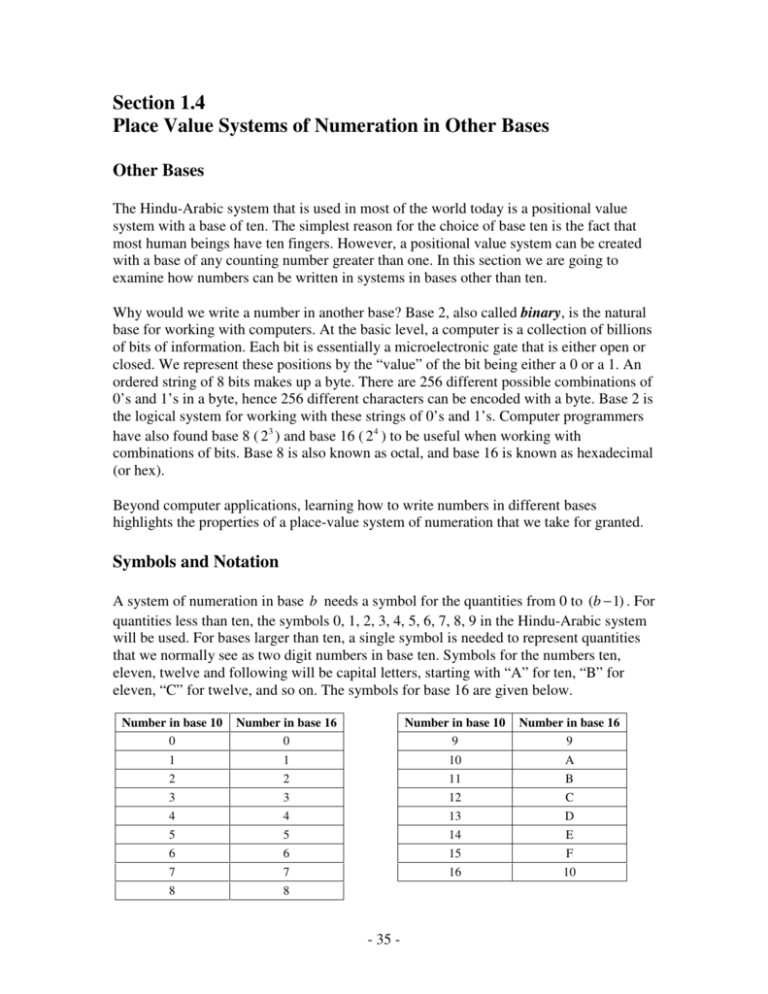
Section 1.4 Place Value Systems of Numeration in Other Bases Other Bases The Hindu-Arabic system that is used in most of the world today is a positional value system with a base of ten. The simplest reason for the choice of base ten is the fact that most human beings have ten fingers. However, a positional value system can be created with a base of any counting number greater than one. In this section we are going to examine how numbers can be written in systems in bases other than ten. Why would we write a number in another base? Base 2, also called binary, is the natural base for working with computers. At the basic level, a computer is a collection of billions of bits of information. Each bit is essentially a microelectronic gate that is either open or closed. We represent these positions by the “value” of the bit being either a 0 or a 1. An ordered string of 8 bits makes up a byte. There are 256 different possible combinations of 0’s and 1’s in a byte, hence 256 different characters can be encoded with a byte. Base 2 is the logical system for working with these strings of 0’s and 1’s. Computer programmers have also found base 8 ( 23 ) and base 16 ( 2 4 ) to be useful when working with combinations of bits. Base 8 is also known as octal, and base 16 is known as hexadecimal (or hex). Beyond computer applications, learning how to write numbers in different bases highlights the properties of a place-value system of numeration that we take for granted. Symbols and Notation A system of numeration in base b needs a symbol for the quantities from 0 to (b − 1) . For quantities less than ten, the symbols 0, 1, 2, 3, 4, 5, 6, 7, 8, 9 in the Hindu-Arabic system will be used. For bases larger than ten, a single symbol is needed to represent quantities that we normally see as two digit numbers in base ten. Symbols for the numbers ten, eleven, twelve and following will be capital letters, starting with “A” for ten, “B” for eleven, “C” for twelve, and so on. The symbols for base 16 are given below. Number in base 10 0 Number in base 16 0 Number in base 10 9 Number in base 16 9 1 2 3 4 5 6 1 2 3 4 5 6 10 11 12 13 14 15 A B C D E F 7 8 7 8 16 10 - 35 - Section 1.4 ________________________________________________________________________ To identify the base in which a number is written, we will adopt the convention of identifying bases other than ten with a subscript on the right side of a number in a different base. For example, the number sixteen in base sixteen will be written 10 16 . The Expanded Form of a Number The values of each position in a Hindu-Arabic number are powers of ten ..., (10)4 , (10)3 , (10) 2 , (10)1 , 1 The above place values represent, for example, the ten-thousands place, the thousands place, the hundreds place, the tens place, the ones place, etc. (Notice that 1 is a power of ten, since 1 = 100 .) The rule that allows a string of digits from 0-9 to represent any counting number requires that each digit in a particular place in the string is multiplied by the place’s appropriate power of ten. Explicitly writing out this multiplication for a number expressed in a placevalue system is called writing the number in expanded form. Example 1: Write the base ten number 3628 in expanded form. Solution: In expanded form, 3628 = ( 3 ×103 ) + ( 6 × 102 ) + ( 2 × 101 ) + 8 (Notice that 8 can be written as 8 × 100 .) A number written in any base may be written in expanded form in a similar fashion. The place values for a binary system (base 2) are ..., 25 , 24 , 23 , 22 , 21 , 1 (Notice that 1 = 20 .) The expanded form of a binary number multiplies each digit by its corresponding power of 2. Example 2: Write the binary number 1011001 2 in expanded form. Solution: The number has 7 digits, so the leftmost digit is multiplied by 27−1 = 26 . In expanded form: 10110012 = (1× 26 ) + ( 0 × 25 ) + (1× 24 ) + (1× 23 ) + ( 0 × 22 ) + ( 0 × 21 ) + 1 ↑ 1× 2 0 - 36 - Section 1.4 ________________________________________________________________________ Example 3: Write the number 23158 in expanded form. Solution: In base 8 the place values are ..., 84 , 83 , 82 , 81 , 1 (Notice that 1 = 80 .) The number 2315 8 has four digits, so the highest power of 8 used in this number is 3. In expanded form: 23158 = ( 2 × 83 ) + ( 3 × 82 ) + (1× 81 ) + 5 ↑ 5 × 80 Converting from Another Base to Base Ten The expanded form of a number written in any base may be used to convert it to a number in base ten. Simply perform the multiplication and addition indicated in the expanded form in base ten. The resulting answer is the base ten representation of the number. Example 2 Revisited: Write 1011001 2 in base ten. Solution: The expanded form of 1011001 2 is 1011001 2 = (1× 26 ) + ( 0 × 25 ) + (1× 24 ) + (1× 23 ) + ( 0 × 2 2 ) + ( 0 × 21 ) + 1 Performing the multiplication and addition indicated: (1× 2 ) + ( 0 × 2 ) + (1× 2 ) + (1× 2 ) + ( 0 × 2 ) + ( 0 × 2 ) + 1 6 5 4 3 2 1 = (1× 64) + (0 × 32) + (1× 16) + (1× 8) + (0 × 4) + (0 × 2) + 1 = 64 + 0 + 16 + 8 + 0 + 0 + 1 = 89 Therefore, 1011001 2 = 89 in base ten. - 37 - Section 1.4 ________________________________________________________________________ Example 3 Revisited: Write 2315 8 in base ten. Solution: The expanded form of 2315 8 is 2315 8 = ( 2 × 83 ) + ( 3 × 82 ) + (1× 8 ) + 5 ↑ 5 × 80 Performing the indicated multiplication and addition gives ( 2 × 8 ) + ( 3 × 8 ) + (1× 8 ) + 5 3 2 1 = ( 2 × 512 ) + ( 3 × 64 ) + (1× 8 ) + 5 = 1024 + 192 + 8 + 5 = 1229 Therefore, 2315 8 = 1229 in base ten. This same procedure works for a number written in any base. Let’s try a few more different bases for practice. Example 4: Write the number 2432 5 in base ten. Solution: The expanded form of this number is 2432 5 = ( 2 × 53 ) + ( 4 × 52 ) + ( 3 × 51 ) + 2 = ( 2 × 125 ) + ( 4 × 25 ) + ( 3 × 5 ) + 2 = 250 + 100 + 15 + 2 = 367 Thus, 2432 5 = 367 in base ten. Example 5: Write the number CA7 16 in base 10. Solution: The table of base sixteen numerals shows that C represents 12 and A represents 10. The expanded form of this number is: - 38 - Section 1.4 ________________________________________________________________________ CA7 16 = (12 × 162 ) + (10 × 161 ) + 7 ( Remember that 7 = 7 ×16 .) 0 = (12 × 256 ) + (10 × 16 ) + 7 = 3072 + 160 + 7 = 3239 Thus, CA7 16 = 3239 in base ten. In summary, you should perform the following steps to convert a number in another base to its equivalent representation in base ten: 1. Write the number in expanded form with powers of the base 2. Perform the indicated multiplication and addition in base ten. 3. The answer is the base ten representation of the original number. Converting a Base Ten Number to Another Base The number 326 in base ten is the quantity that is 3 groups of 100 plus 2 groups of 10 plus 6 singles. Writing this quantity in base ten conveys these groupings to the reader. Converting a base ten number to a number in a different base involves division. Why? To write the quantity 326 in another base b, we must determine how many groups of b items can be formed from 326 items. This problem is modeled by the operation of division. This is best illustrated by examples. Example 6: Write the number 59 in base 8. Solution: The place values for base 8 are ..., 83 = 512, 82 = 64, 8, 1 With only 59 items, we cannot form any groups of 512 or 64. We can form groups of 8. Dividing 59 by 8 shows that 59 items can be grouped into 7 sets of 8 with 3 left over. 7 8 59 56 3 The base 8 expanded form of 59 is: 59 = ( 7 × 81 ) + 3 ↑ 3 × 80 Therefore, 59 = 73 8 - 39 - Section 1.4 ________________________________________________________________________ Notice that we started by dividing our base ten number 59 by the largest power of 8 that is smaller than the number. This is the first step for translating any base ten number into another base. The next step is to divide the remainder of this division problem by the next smaller power of the base. A succession of division problems is created by dividing the remainder of the previous problem by the next smaller power of the base until the last division problem is dividing by 1. Example 7: Write the number 444 in base 5. Solution: The place values in base 5 are ..., 54 = 625, 53 = 125, 52 = 25, 5, 1 The largest power of 5 smaller than 444 is 53 = 125 . So, we will start dividing 444 by 125. 3 125 444 375 69 Now divide 69 by the next lower power of 5, 52 = 25 . 2 25 69 50 19 Now divide the remainder, 19, by 5 (which is the next lower power of 5. 3 5 19 15 4 At this point, the next lower power of 5 is 1. We know 4 ÷ 1 = 4 with 0 left over, so we often do not explicitly write out this division problem in the list. Yet, 4 is the last quotient in our sequence of division problems. The division answers show that 444 is 3 groups of 125 plus 2 groups of 25 plus 3 groups of 5 plus 4 singles. Therefore, 444 = 32345 . - 40 - Section 1.4 ________________________________________________________________________ Example 8: Write 53 in base 2. Solution: The place values in base 2 are ..., 26 = 64, 25 = 32, 2 4 = 16, 23 = 8, 2 2 = 4, 2, 1 The largest power of 2 smaller than 53 is 32, so we begin by dividing by 32 and continue by dividing each remainder by the next smaller power of 2. 1 32 53 1 16 21 0 85 1 4 5 0 21 1 11 32 16 5 0 4 0 5 1 1 1 0 21 Thus, 53 = 110101 2 . Notice that in Example 8 the division problems include dividing by EVERY power of the base starting with the largest power smaller than the number, even if the quotient is 0. The zeroes in the number are important to holding the places so each value is correct. Also, notice that the division by 1 was explicitly included. Especially in base 2, it is useful to include this problem to make sure the proper number of digits is included. Example 9: Write 1391 in base 12. Solution: The place values in base 12 are ..., (12 ) = 1728, (12 ) = 144, 12, 1 3 2 The largest power of 12 that is smaller than 1391 is 144. Therefore, begin by dividing by 144. 9 144 1391 1296 7 12 95 84 95 11 11 1 11 11 0 The convention for base 12 is that 10 = A and 11 = B , so 1391 = 97B12 . - 41 - Section 1.4 ________________________________________________________________________ In summary, you should perform the following steps to convert a base ten number to another base: 1. Determine the powers of the base, which are the place values. 2. Determine the largest power of the base that is smaller than the number given. 3. Divide the number given by the power of the base determined in step 2. 4. Create a sequence of division problems by dividing the remainder of a division problem by the next smaller power of the base. Continue until dividing by 1. 5. The quotients, in order, are the digits in each place of the numbers representation in the given base. - 42 -
